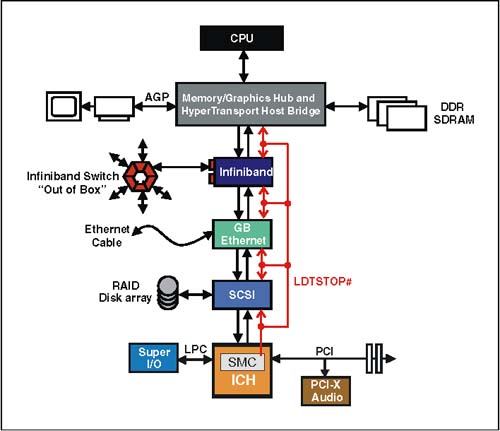Reporting Power Management Events to HT Devices
| In response to a STOP_GRANT message, the SMC controller may assert LDTSTOP to all HT device interfaces as illustrated in Figure 18-1 on page 438. For example, when the Host Bridge detects that the Processor is entering a VID/FID change, it will send a STOP_GRANT message indicating the change and causing the SMC to assert LDTSTOP#. Details regarding the timing relationships between the reception of STOP_GRANT and the assertion of LDTSTOP# is discussed in "The Link Initialization Disconnect Sequence" on page 227. Figure 18-1. LDTSTOP# is an Input to All HT Devices Except the SMC. As described earlier, devices can gate clocks, stop PLLs, and power down portions of the device after the LDTSTOP# signal is asserted. However, LDTSTOP# can be asserted for a variety of reasons besides power management. In such cases, it may be inappropriate for the device to enter a low power state. If a device needs to differentiate between the causes of LDTSTOP# assertion, it must monitor STOP_GRANT cycles and decode the SMAF code so that it knows the reason for LDTSTOP# being driven by the SMC. |
EAN: 2147483647
Pages: 182
